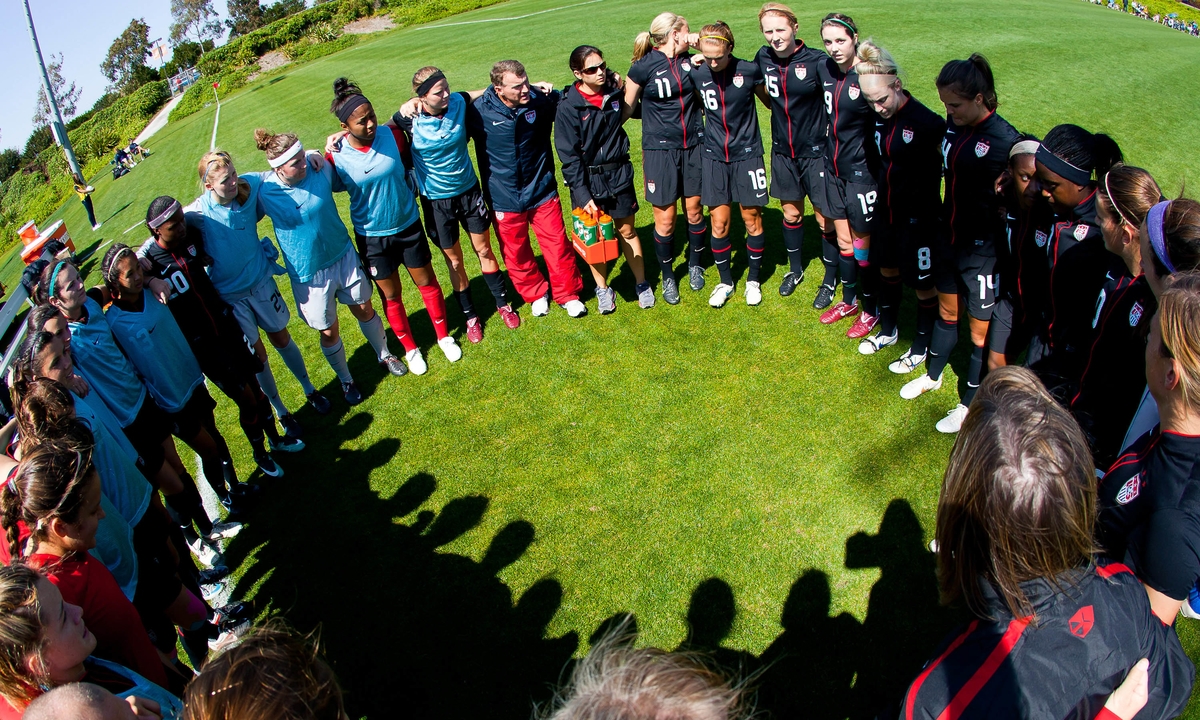A bully’s worst nightmare is you: How to shut down bullying in youth sports

 It’s arguably one of the best goals I ever scored.
It’s arguably one of the best goals I ever scored.
Facing the goal from a difficult angle, near the corner of the penalty area, I saw the goalkeeper coming off of his line. My inside-of-the-right-foot shot was exceptionally well placed, tucking inside the far post to settle in the net. The sideline near me erupted with cheers, and several kids yelled to me, “Great shot, 17!”
Just one problem: I scored against my own team.
The classic “own goal.” It was a terribly traumatic experience for a 10-year-old outside defender who was just trying to play the ball back to his goalkeeper (and best friend) Glenn. But it was made far worse by the verbal abuse I took in the minutes after. The laughter of the parents, and the faux applause from kids just a few years older than me on the sideline, sent me to tears. I was rightfully subbed from the game a little later.
I was humiliated and defeated.
I laugh about it today, telling people how impressive the far-post shot was (Glenn never thought so, though). But as a coach, I use the memory to remind myself how words and cruel actions can greatly influence a young player’s life.
Which is why I’m pleased with the just-released Department of Education findings that show that, at least in school, bullying appears to be on the decline.
According to the Associated Press, the department found that 22 percent of students age 12 to 18 said they were bullied in 2013, down six points from 2011. It is also the lowest level since the National Center for Education Statistics began surveying students on bullying in 2005.
It’s not all milk-and-honey, of course. “Those who are bullied are more likely to be girls than boys and more likely to be white than minority students,” reporter Kimberly Hefling writes.
She adds: “Students bullied are more likely to struggle in school, skip class, face substance abuse and commit suicide, the department said research has found. Being made fun of, called names or being insulted was the most common way the surveyed students said were bullied. Being the subject of rumors or threatened with harm was also common.”
+Read: For the young player, details matter
The old-school image of a bully is the big kid with a crew cut holding the puny nerd by his ankles and shaking him upside down for his lunch money. Not anymore. Bullying on social media has taken it to a whole new level.
Youth sports has its share of bullying, and soccer is no exception. Indeed, anytime you have a large group of kids together, the opportunities for one or more kids to get picked on increase.
For the soccer coach, protecting kids from bullying is a top priority. It is our responsibility to create a competitive but bully free environment.
But the overworked mom or dad, who may have arrived straight from the office and is trying to plan out the practice, may not be aware of what the kids are doing during warm-ups and water breaks. And my experience shows that it is during those times when bullying behavior is most likely to occur.
I am by no stretch a professional counselor. But 25-plus years of coaching experience and 20 years as a dad have helped me learn a few things to pass along:
Coaches: We often ask our players to know what’s happening during a game. Well, we need to do the same when it comes to player interaction.
Don’t disappear mentally when setting up the day’s practice session. When you set up your cones or chat with a parent, position yourself so you can watch the team interact even as you’re walking or talking. If your team is old enough to have captains, talk with them regularly about the team’s relationships. Remind the team jokester – there’s always at least one! – that having one or two players on the receiving end of pranks won’t be tolerated.
And perhaps most importantly, establish a team culture that emphasizes friendship and camaraderie over results. Even if the kids aren’t the best of friends off the field, you can encourage them to watch each other’s backs when away from the pitch, particularly at school. By firmly setting high standards for how each player treats his or her teammates – and regularly reinforcing those standards – you will go a long way toward eliminating bullying as a problem.
+Read: Is Soccer still the Gentleman’s Game?
Parents: Talk to your son or daughter about his or her relationships on the team. If your child clams up, that could be a sign there’s an issue. Your child may also take your interest as an opportunity to let an adult know that a teammate is having a hard time because several others are picking on her (for whatever reason). And if you drive a carpool of kids, conduct your own version of “filming the game” by listening to what the kids are discussing. If something’s amiss, a brief conversation with the coach is in order.
Players: Remember who you are and what you stand for. Don’t bully. Period! You don’t gain respect through fear and intimidation. You earn respect by being a good teammate and friend.
If one teammate is picking on another, step in and address it politely. If it continues, tell your coach. And if you’ve been bullying a teammate – intentionally or unintentionally – stop it immediately. Better yet, take that teammate aside, look him or her in the eye, and apologize. It’s not too late to correct your behavior, and in a matter of seconds, you may transition from a feared peer to a welcome friend.
Said John Stuart Mill: “Bad men need nothing more to compass their ends, than that good men should look on and do nothing.”
If you see a kid being treated poorly by his teammates, don’t look on and do nothing. Do the right thing.
SOCCERWIRE MARKETPLACE
- Wanted Licensed Youth Soccer Coach
- Join Official Elite Summer Soccer Camps with Europe’s Top Pro Clubs!
- The St. James FC Travel Staff Coach - North (Loudoun) & South (Fairfax)
- The St. James FC Girls Academy (GA) Head Coach - 2 teams
- The St James FC Boys Travel Tryouts
- OFFICIAL BAYERN MUNICH SUMMER CAMPS U.S.
- JOIN THE ALLIANCE!
- OFFICIAL FC BARCELONA CAMPS U.S.
- The Cup San Diego - Hosted by Legends FC
- Players Wanted - Undergraduate or Post-graduate












